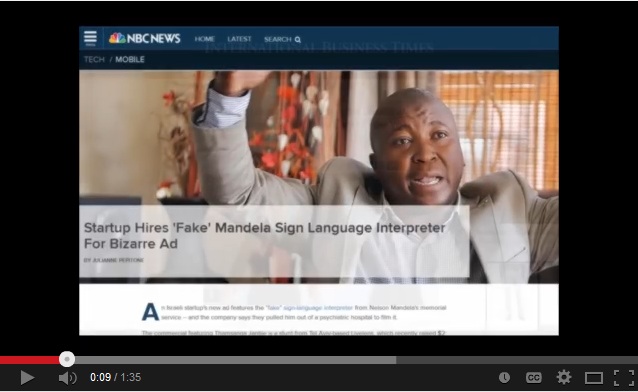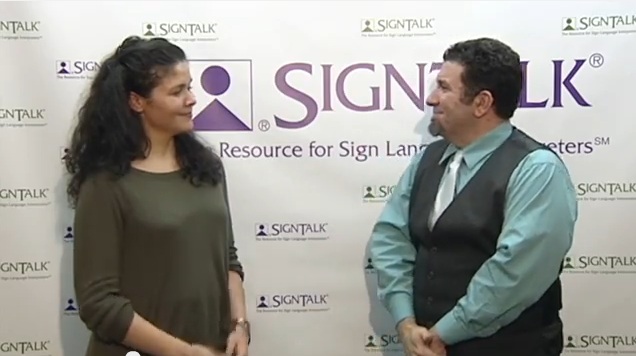 I hate the word “inclusion.” To me, it implies that all organizations are rightly controlled by the majority, and those with power control which few minorities are in or out. Including people of color, women, people with disabilities or Deaf people is subject to their whim. What if, instead of a few seats at the table being allotted for those who are marginalized, every workplace, school, government body and cultural institution were truly open and accessible to everyone?
I hate the word “inclusion.” To me, it implies that all organizations are rightly controlled by the majority, and those with power control which few minorities are in or out. Including people of color, women, people with disabilities or Deaf people is subject to their whim. What if, instead of a few seats at the table being allotted for those who are marginalized, every workplace, school, government body and cultural institution were truly open and accessible to everyone?
As interpreters we play a large role in inclusion. We are often hired so one or two Deaf people can be included in a meeting or event. In a world with full access, rather than inclusion, everyone would sign, making interpreters unnecessary and making Deaf people full participants. While there are a few spaces where ASL is the dominate language and Deaf norms are upheld, this is unlikely to become the standard in American life any time soon. So, how can we help make the spaces we inhabit more egalitarian?
When I arrive at an assignment for the first time, I do not introduce myself as “John’s interpreter,” which bolsters the misconception that the interpreter is only present for the benefit of the Deaf person. I say, for example, “Hi, I’m Amy. I’m the class’s interpreter for the semester,” or “I’ll be the interpreter for your meeting.” I want to start our working relationship with a clear signal that everyone in the room is using my services.
This mindset extends to how we use CDIs. I don’t say, “The consumer needs a CDI.” This implies that the deficit resides in the Deaf consumer, who lacks some quality that does not allow him or her to use a hearing interpreter alone. Actually, the deficit lies in the hearing consumer who does not know sign language, and in me, who does not know the foreign sign that the consumer uses, or does not have the skills to communicate with a consumer with nonstandard language use. Rather, I say that “the meeting requires a CDI,” or even that I lack the skills to communicate with this specific consumer and therefore require a CDI as a team to effectively facilitate communication.
Do these subtle changes in language make a difference? I can’t be sure. But as an interpreter who respects the power of language to communicate one’s beliefs and perspectives, I believe that words matter. By choosing words that do not contribute to the audist assumptions that spoken English is the natural language in any environment and only Deaf people need accommodations, I believe I’m chipping away at the assumptions too many of our hearing consumers make.
One challenge facing most every interpreter is negotiating turn-taking between signing and speaking participants in a meeting. Many hearing interpreters, myself included, privilege spoken comments over signed comments, forcing the Deaf participants to wait longer to get their points across. When a Deaf consumer begins signing at the same time that a hearing consumer begins to speak, do we interrupt the hearing person to prioritize the Deaf person’s right to contribute? While there are many factors to consider, including the formality of the meeting and the relative statuses of the participants, too often hearing interpreters relay hearing people’s comments first. This is the very nature of “inclusion”: Deaf people may participate, but never at the expense of any hearing person’s power.
To combat my habit of favoring what I hear over what I see, I make a special effort to begin speaking, in order to take the floor, as soon as a Deaf consumer begins signing. Depending on the dynamics of the situation, I may use a comment such as, “I want to jump in here to share my perspective on this…” or “Not to interrupt, but I did want a chance to say….” These introductory phrases can smooth over any overlap or competition for the right to speak. They also can fill the silence while you’re receiving the message and formulating an English interpretation before you begin voicing.
My perspective has shifted through the years. Instead of viewing my role as providing Deaf people with access to the hearing world, I now see how I can help transform the spaces where I work into level playing fields, where Deaf people may freely contribute to a project, influence their colleagues, or guide the conversation. Until every person learns to sign, we will be in the rooms where inclusion can, hopefully, transform into full participation.









